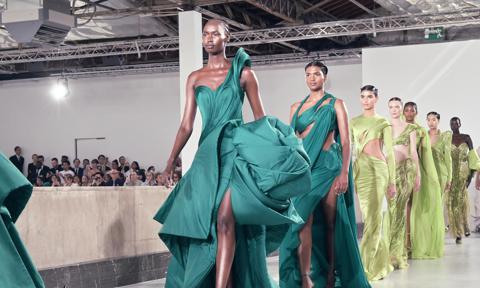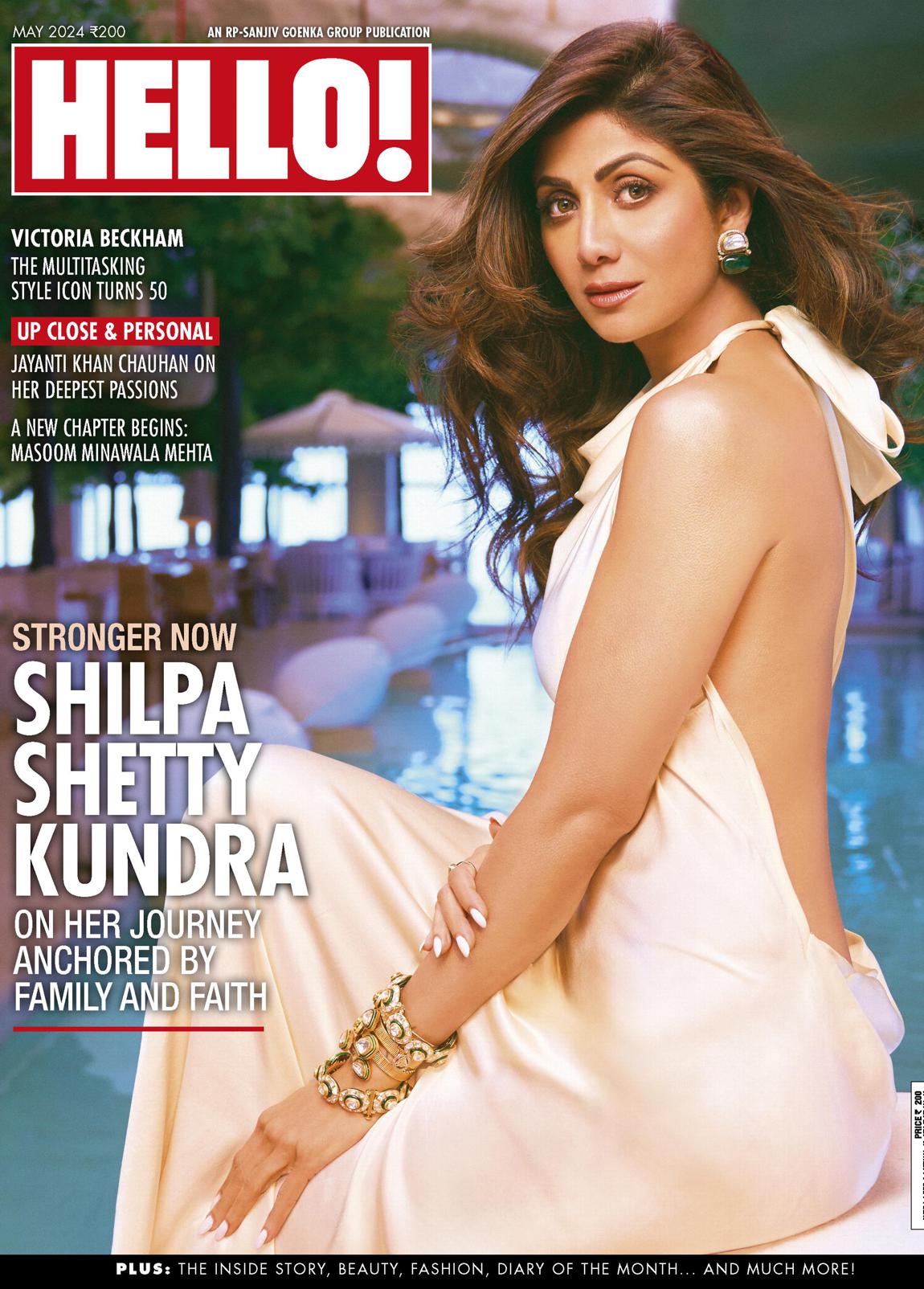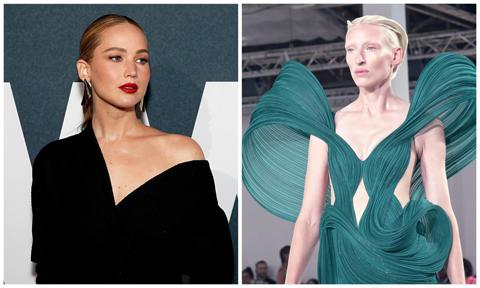
2022 was a whirlwind of fashion trends embracing Barbiecore, Regencycore and Balletcore, but this year took a decisive turn towards the discourse of “Loud versus Quiet” luxury. Unlike many fleeting “core” trends, the quiet luxury movement sparked by the HBO television series Succession ignited a debate within fashion that defined the narrative of 2023.

The popular television show, revolving around a media dynasty— the Roys, purportedly modelled on the Murdoch family—exuded an old-money style. Their attire spoke volumes in terms of the finest tailoring and unparalleled quality, yet without the ostentation of logos, branding or trend-driven silhouettes.
It’s often said, “Money shouts, Wealth whispers,” and this ethos resonated in their neutral colour palettes and classically tailored garments. Even the seemingly simple cashmere sweater they adorned came with a price tag well beyond a lakh of rupees.
This paradigm shift propelled brands like Loro Piana, Brunello Cucinelli and The Row into the fashion limelight, challenging the dominance of logo-heavy labels such as Louis Vuitton, Gucci and Fendi, which have long epitomised ostentatious luxury. It also ensured celebrities who had a more “quiet” aesthetic such as Gwyneth Paltrow, Katie Holmes and Victoria Beckham were back on every best- dressed list. As designer Anavila Misra, known for textiles-led aesthetics, puts it, “The hashtag #quietluxury is all over social media. And quiet brands with strong craftsmanship and high-quality clothing without overt branding are finding themselves in the centre of hot debates on quiet versus loud.”

The sudden buzz across fashion magazines’ websites centred on the pursuit of “Stealth Wealth,” while fashion content creators inundated their platforms with guides on mastering the art of quiet luxury. The must- have accessory of the summer for fashion girls became the Loro Piana pouch (resembling, to some, nothing more than a cosmetic case), while their Summer charm loafers, priced around ₹90,000, caused fashion enthusiasts to temporarily set aside their designer sneaker collections. Many consumers invested in these pieces believing they were acquiring timeless, seasonless items destined to endure summers to come. However, one can’t help but wonder how many will continue to embrace these items in the years ahead.
Quiet Luxury In The South Asian Context
Bryan Yambao, known as Bryanboy, the Filipino-born, Sweden-based fashion creator with almost 9,00,000 followers on Instagram, made this statement, “This ‘quiet luxury’ notion that people with ‘true’ wealth only wear discreet, conformist uniforms is nothing but absolute nonsense. Banal, rebranded. It’s not ‘luxury’ per se, it’s an old aesthetic rooted in whiteness and deception — dressing in a uniform manner to control how people perceive them.” An interesting perception especially for those who came from the Global South. With surface ornamentation and woven textiles being a large part of our textile heritage and seeing a renaissance, Anavila says, “We have many examples of maximalist design standing the test of time. The quiet luxury of Indian textiles like khadi, jamdani and chikankari comes with a maximalist undertone of brocades and paithanis, and we have various such examples from other regions as well. And I, as a consumer, might be equally allured by both. And the beauty is that these styles are beautifully crafted with generational knowledge and skill and can be passed from one generation to another, and yes, they are all statement pieces.” Think of one of the standout moments in fashion this year and it is probably Gigi Hadid wearing an Abu Jani- Sandeep Khosla chikankari sari to the NMACC opening or Beyonce wearing a Gaurav Gupta neon green saree gown.
It does ask the question: where does quiet luxury really fit in the South Asian context and was quiet luxury just a social media trend and not a real trend? And also, will we be talking about quiet and loud luxury in 2024?
Rahi Chadda, the London-based South Asian influencer known for his sophisticated style, says, “I believe that social media has created a platform to unpack a variety of topics and how we perceive luxury. Luxury for me can be many things, I can identify with quiet luxury in my everyday lifestyle; whilst for event dressing, I can be quite maximalist.” He believes brands need not worry about creating timeless items but instead concentrate on crafting inspiring products, a strategy he believes will naturally yield timeless results. A mantra made for the contemporary Indian designer who has always taken a crafts- first approach to fashion.

Rahul Mishra, the first Indian designer to be invited to be a part of Paris Couture Week and who recently launched his global contemporary wear AFEW Rahul Mishra during Paris Fashion Week, says, “The surface embellishment, silhouette or the overall look of a garment should be enough to determine your identity from a design, not a monogram. This can also be observed in the fact that we don’t use a monogram within Rahul Mishra Couture.” And when craft is the hero, clothes are automatically conversation starters and grab eyes, so he adds, “I like to believe that quiet luxury for me is more about a consumer’s experience with the product, and their perception by their spectators is merely incidental.”
Gaurav Gupta, who recently became the second Indian designer to be invited to show at Paris Couture Week, and is known for his fantastical and sculptural aesthetics that always make a statement, adds, “I think what is loud for one person can be quiet for another person. The gamut is so large. We all have things in our wardrobe which are quiet and loud. So it really depends from person to person and mood to mood.”

The Social Media Factor
Many of these polarising trends that we see on social media are just that. Monica Shah, co-founder of the label Jade, says, “I think social media has contributed a fair amount to overt displays of luxury—loud luxury, as the media calls it. And the rise of ‘quiet luxury’ is a result of this saturation, so to speak. The digital realm often amplifies extreme positions, and the appeal of minimalism, simplicity and understated elegance finds its place amidst the loud and flashy content.”
It is not the first time in recent years that we have seen a minimalist trend dominate fashion. In the 1990s, a period of recession and backlash from the ostentatious 1980s saw aesthetics become cleaner and more subtle. So perhaps this quiet luxury moment is a sign of things to come—with logomania, which dominated fashion and retail in the West, seeing things slow down. Just a few weeks ago, Phoebe Philo made her return to fashion, the former creative director of Celine, a designer with a cult following known for her polished, functional and finesse-driven style. Her return was much anticipated.
In October, she released her first drop of limited edition pieces, staying true to her understated ethos. With her handbag prices starting from £2,600 to £6,200, it is clear this is super-brand pricing for a newcomer on the block, and it sold. For fashion media, this was proof that quiet luxury was here to stay. Monica observes, “While it may appeal to a niche audience that appreciates refined elegance, the impact of such drops can extend beyond the niche as it sets a tone for a broader shift towards more enduring styles.”
Perhaps Rahi sums it up best when he says, “These two dominating trends of recent will live side by side. I think people should start understanding what works for them and sticking to it, rather than trying to balance what is more luxury: quiet or loud,” Perhaps the result of all these polarising trends dominating post-COVID fashion is that things are becoming more led by personal style than by what brands, social media or a television show dictates. Let us hope in a backlash to this (something let us not forget fashion loves to embrace) 2024 will hopefully be the year when personal style and dressing for your own individuality, comfort and expression is celebrated.
This story has been adapted for the website from a story that was originally published in Hello! India’s December 2023 issue. Get your hands on the latest issue right here!
- Quick links
- Quiet Luxury
- Loud Luxury






